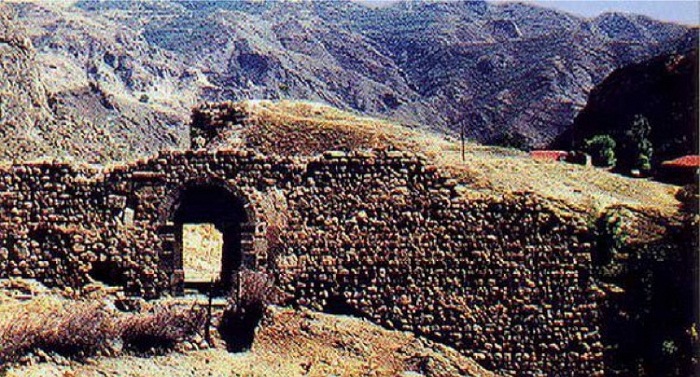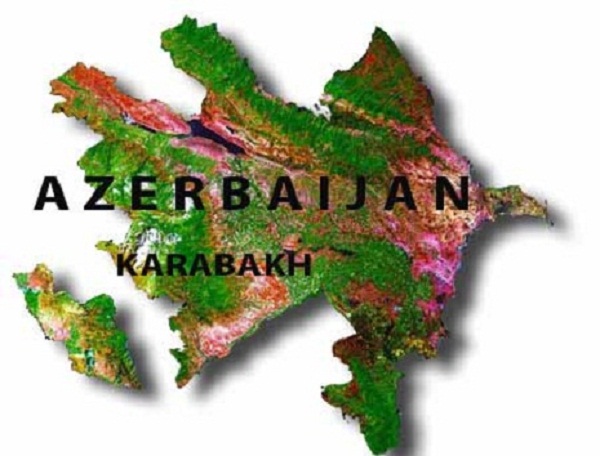The region covers the following districts and villages: city of Lachin; district of Gayghi and villages оf Agbulag; Alkhasly; Ahmadli; Hajilar; Gulabird; Jagazur; Gushchu; Minkend; Mirik; Mishni; Sadynlar; Sheylanly Agjakend; Ardushlu; Agjayazy; Ashaghi Farajan; Farajan; Bozlu; Galaja; Bulunduz; Ayibazar; Birinji Ipek; Vagazin; Bozguney; Kalafalyg; Hajikhanly; Govushug; Budagdere; Hojaz; Mollalar; Uluduz; Avazlar; Dashly; Valibayli; Naryshlar; Hetemler; Kaha; Jijimli; Ashaghi Jijimli; Gazydere; Zabukh; Sus; Ghyzylja; Baylik; Irchan; Chambarakhach; Khumarta; Garabayli; Lolabaghirli; Korchabulag; Zerti; Khyrmanlar; Agbulag; Birinji Tyghyk; Ikinji Tyghyk; Garygyshlag; Soyugbulag; Ghylychly; Zeyve; Kohnekend; Gyshlag; Eyrek; Alyjan; Gozlu; Finghe; Gorchu; Zagalty; Goshasu; Alpout; Butovluk; Kurdhaji; Arikli; Hajisamly; Garasaggal; Kamally, Chyragly; Garakechdi; Katos; Malkhalaf; Mazutlu; Malikpeye; Malybay; Agoglan; Husulu; Ziyrik; Myghydere; Dayirmanyany; Tarkhanly; Dayhan; Baldyrganly; Oguldere; Agalarushaghy; Pirjahan; Seyidler; Garachanly; Pichenis; Khachynaly; Kohne Jorman; Sonasar; Mayis; Tezekend; Hagnezer; Erdeshevi; Safiyan; Khanalylar; Suarasy; Turkler; Farrash; Nureddin; Fatalipeye; Aganus; Unannovlu; Arab; Turshsu; Shelve; Imanlar; Dambulag; Shamkend; Elekchi; Bozdogan; Chorman; Nagdaly.
The following educational and social institutions were providing its services before the occupation: 101 secondary schools; 2 pre-school and 5 out-school educational institutions; 1 vocational school; 85 clubs, 119 libraries; 5 musical schools; 142 healthcare institutions. The region had also the architectural monuments such as the Albanian temple (V century), turbehs (XIV, XIX centuries), the fortress (XVII century), the mosque (1718), the palace (1716), the bridge (XVIII century) and others.
Aghoghlan Temple



Aghoghlan temple is set in two acres of land at the 30th kilometer of Lachin-Minkend highway, on the right bank of the river Hekeri, near Kosalar village. Aghoghlan Temple is Albanian monastery built in the 5th-6th centuries. As the monument was exposed to avalanches and destructions at different times, it was rebuilt in the style of church and adapted to monastery. The first foundation of the monument was preserved in its initial form during repairs; the new walls were built over the old ones. After restoration, Aghoghlan temple had become one of the most spectacular monuments of the Albanian period architecture of the Azerbaijani history. The temple is 25 meters long and 12.5 meters wide. Two rows of the square-shaped eight bearing piles – pylons divided the inner side of the building into three parts.
The monument has been under occupation since May 18, 1992. Armenians made illegal changes in architectural style and the interior of Aghoghlan monastery, completely wiped out the inscriptions on the walls of the monument, as well as a large number of ornaments and symbols reflecting the Albanian period or greatly changed them. In 2006, under the pretext of repairing the monument for the second time, the Armenians placed in different parts of the walls 26 boards with inscriptions indicating belongingness of the monument to the Armenian Apostolic Church. 2 tombstones were erected in the right side of the courtyard and 2 stone crosses made of red basalt stone from Irevan were erected in front of the entrance door by Armenians.
After the occupation the Armenians renamed the Aghoghlan temple “Jijernavank”.
Hamza Soltan Palace

The palace is situated in Husulu village of Lachin region. The Hamza Soltan Palace is supposed to be built in 1761. From the general view of the palace it becomes clear that, the castle had a tall tower. There was an entrance door in the corner of the south side of the castle. The two-storeyed palace has beautiful arched ceilings fastened to the thick side walls. The palace also has a large hall, a number of auxiliary rooms and a court-house. Delicately embellished door and windows of the palace are made of the walnut wood.
Eastern architectural traditions were widely used in the building of the palace. Most probably the sultanate was established here in 1700 and governed a large part of Zangezur region. The palace building was constructed of local stone and construction lime. After the occupation by Armenia, the village was renamed Melikatun. At the present time, the Armenian invaders make use of the repaired Hamza Soltan Palace as a guest house or a hotel for tourists.
Jijimli Village Tombs


Two tombs rise close within a shrine near Jijimli village. Malik Ajdar Tomb, traditionally considered the oldest one, is circular inside and octagonal outside.
The right-angle opening of the tomb, the front door is in the northern side. The top of the door frame is covered with a pointed-beam-like architrave stone. Inside its edge, remains of a rider’s hewn picture are observed. A number of the site’s details are the same as those of tombs in Damirchilar village of Gubadli region. There are no construction inscriptions and carved surfaces on the tombs. The researchers supposedly date the Jijimli tomb from the 12th-13th centuries.
The late 13th century, in the reign of Elkhanids, seems more convincing as the construction time.
Popularly called the “Deaf Dome”, the other Jijimli tomb is cruciform inside and square outside. It is supposed to have been constructed in the 17th century.
Both of monuments are presently under the occupation of the Armenian Armed Forces.
Lachin History and Ethnography Museum

Lachin History and Ethnography Museum functioned from 1974 to May, 1992. The museum was rich with the exhibits of high artistic and historical significance.
The museum building was considered as a historical and culture monument. Total area of museum was over 1200 sq. meters. The museum consisted of 24 rooms, 1 exhibition hall and a museum collection of 72 sq. meters. Plastic works of art, carvings, statues of horse and ram and very many household items made in different centuries were exhibited in the courtyard of museum. From 1983 to 1992, large-scale expositions were held in museum.
More than 5 thousand exhibits were collected in the main fund of museum. A total of about 10 thousand items existed in the museum. Lachin History and Ethnography Museum was a contest winner of the All-Union competition of museums held in 1989. The museum exhibits could not be salvaged during the occupation of Lachin region by the Armenian Armed Forces in May, 1992.
The museum complex was completely destroyed and razed to the ground by Armenian vandals.
Memorial Museum of Sari Ashiq


In 1988, the memorial museum of the bayati (a kind of Azerbaijani poem created by people) master Sari Ashiq lived in the 12th century, was opened in Gulabird village of Lachin region. At that time, a total of 150 items reminiscent of Sari Ashiq were handed over to the museum. The monument of Sari Ashiq was erected there.
As a result of the occupation of Lachin region by the Armenian Armed Forces in 1992, the museum building and nearly 200 exhibits were destroyed and plundered.
Azerbaijani monuments in Armenian captivity P/1- Aghdam Region
Azerbaijani monuments in Armenian captivity P/2 - Fizuli Region
Azerbaijani monuments in Armenian captivity P/3 - Shusha Region
More about:















































